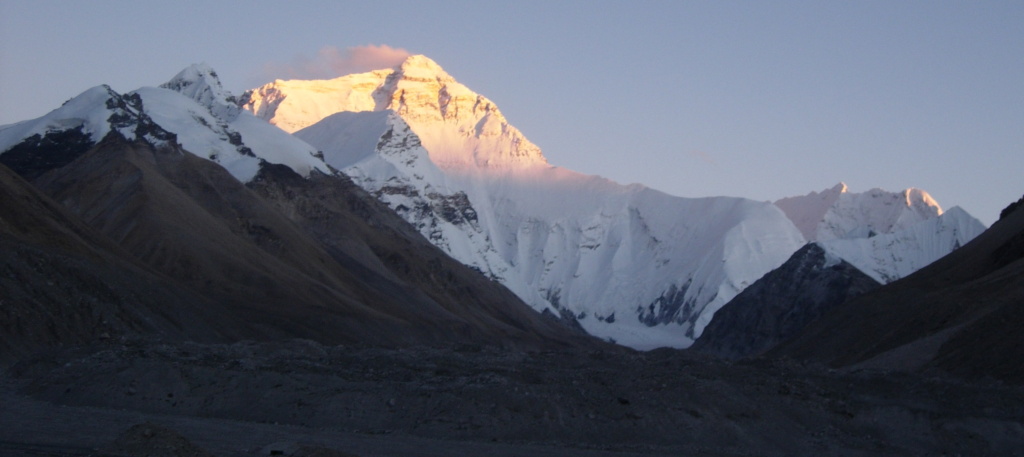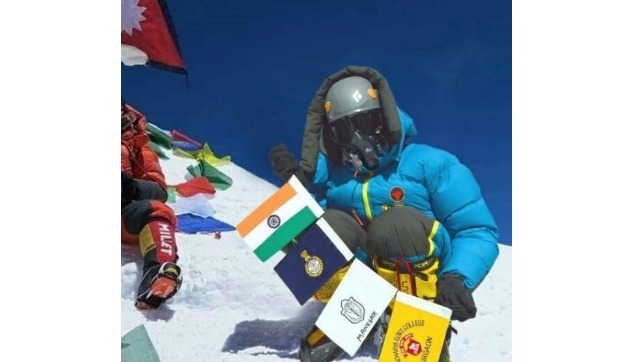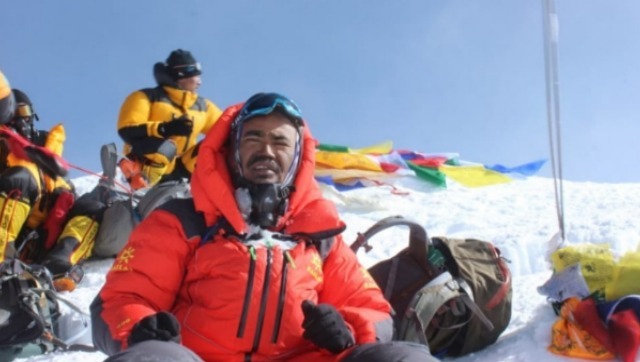The gains from a successful Everest are aplenty. And some are now faking summit claims to avail of them.

Faking Everest: False summit claims rise, as climbers exploit system’s loopholes to win unearned acclaim
Over the last few years, climbing in Nepal has been rocked by false Everest summit claims made by Indians. Since 2016, there have been at least seven cases that have been reported, even as murmurs of other suspect summits continue to do the rounds.
On 19 May 2016, high up at Camp 4 (7,900 metres) on the South Col, Naba Kumar Phukon was in a dilemma. Earlier that evening, he had arrived at the final camp of Mt. Everest alongside his teammates, Seema Goswami and Narender Kumar Yadav, hoping to push for the summit in a few hours. Only now, the discontent inside the tent in which they were all cramped together was as loud as the howling wind outside.
Goswami and Yadav were told by their high altitude guides that there wasn’t enough oxygen for them to continue the climb. By 7.35 pm, the team had split, as Phukon headed out for the summit alongside his high altitude guide, Pemba Sherpa. At 7.45 am on 20 May, he was standing atop Everest.
By the time he returned to Camp 4 that evening, he heard that Goswami and Yadav had been rescued from the Balcony, a feature at 8,400 metres on Everest. A few Indian climbers told Phukon that they had seen the duo earlier in the day, descending to Camp 3. Phukon hadn’t seen them since his summit push; it was now evident that his teammates had failed to make it to the top.
Another climber, Debashish Biswas, who had abandoned his own climb on neighbouring Lhotse, had also heard of the fate of the two climbers over the walkie-talkie. On 21 May, he received Yadav in Camp 2 and treated him for initial stages of frostbite. The following day, he aided Goswami’s rescue by helicopter.
In the next few weeks, news emerged of Goswami being felicitated for her climb up Everest. A few months after the climb, Phukon visited Haryana to meet Yadav. A short distance from his home, he spotted a banner that read, ‘Everester Narender Kumar Yadav’. When Phukon confronted Yadav, the latter said his climb had been certified by the Department of Tourism (DoT) in Nepal. Phukon warned him against falsifying information and left it at that.
Last month, Yadav was announced as a recipient of the Tenzing Norgay National Adventure Award. Phukon could hardly believe his ears and called out his false claim of climbing Everest. The award was promptly withdrawn a day before the ceremony, even as an inquiry is said to be underway.

Over the last few years, climbing in Nepal has been rocked by false Everest summit claims made by Indians. Since 2016, there have been at least seven cases that have been reported, even as murmurs of other suspect summits continue to do the rounds.
It all started out with the case of Tarkeshwari and Dinesh Rathod of Maharashtra Police in 2016, who tinkered with the summit photos of another climber, Satyarup Siddhanta, and claimed them as their own. While the discrepancies were evident to the naked eye, the photos were also dissected by scientists at CERN, and it was soon established that they had indeed been morphed. However, Siddhanta had to run from pillar to post to prove his innocence and it was only three months after returning from Everest that he was cleared and awarded his summit certificate by DoT. After an inquiry, the Rathods were banned from climbing in Nepal for 10 years and suspended by their employer.
Last year, a Kashmiri climber, Nahida Manzoor, failed to make a photo on the summit of Everest and was later accused of doctoring one. Mumbai-based Sharad Kulkarni’s testimony cleared her climb, though questions remain about her photo.
“While she did climb Everest, the allegations of forging the summit photo are true. She told me she was under tremendous pressure, since she had received funding for the climb,” Kulkarni says.
However, the same year, the claim of three other climbers from Haryana — Vikas Rana, Shobha Banwala and Ankush Kasana — was found suspect. Keval Kakka, who summited Everest and Lhotse that season, had seen them struggling during the acclimatisation climb. When Mostafa Salameh from Jordan questioned their claim, he was told that they had gone to the summit without their high altitude guides, which he found hard to believe given their climbing experience. The final nail in the coffin was when Banwala’s summit photo made it evident that it was not from the top of Everest.
It was no different in the case of Yadav this year, when his summit photo raised questions: he is seen donning an oxygen mask without a pipe that connects it to the cylinder, and a helmet, which is unusual for a climber to sport on the standard South Col route on Everest, besides other visual discrepancies.
A successful climb up Everest brings fame, money, land, and jobs and promotions, besides of course, earning the tag of an ‘Everester’.
“I think it has to do with a general culture where people are now under the impression — go climb Everest, make a name for yourself, and make money or get a job. I’m no one to judge others and say that you must climb mountains only if you are passionate about it. But there certainly shouldn’t be a compromise on ethics and integrity while achieving these goals,” says Kuntal Joisher, who has climbed Everest from the north and south side.
“Whether it is the DoT or the awards committee, a thorough investigation is a must,” he says.

“The moment we reach the summit, we radio base camp to record who has made it and at what time. The liaison officer passes on the message to the DoT. Once the climber is in Kathmandu, he/she has to visit the DoT office with the summit photos and collect the certificate,” says Tendi Sherpa, a 13-time Everest summiteer who runs TAGnepal.
The system in place though is open to compromise, given how the climbing industry functions. For instance, while a permit for 10 climbers may be issued to, say agency X, on paper, agency X may have just three climbers on the team, while the other seven spots are taken up by climbers from other agencies. Then, for the sake of abiding by the rules, a climber from agency X is designated as team leader, but often has little to do with the other seven climbers who may all come from different agencies. As a result, a team leader may not be aware of the progress of climbers, besides those from his own agency, though he signs off the report anyway.
In certain scenarios, a malfunctioning camera means that there are no summit photos and the certificate is issued based on the testimony of climbers and high altitude guides. Given all that’s at stake for a climber, it’s hard to rule out incentives or foul play at work.
“There are times when I’ve seen that the liaison officer is not at basecamp and is sitting in Lukla or Kathmandu. They get all their information from climbers, Sherpas or the agencies, which means there is a lot of scope for mischief,” Biswas says.
“When you climb in India, the Indian Mountaineering Foundation expects photographs from every camp en route — not just the summit. Then it’s clear how the person has reached the top,” he adds.
These suspect summits aren’t just restricted to Indian climbers. A few elite climbers have also been in question for some exceptional climbs over the years.
In 2017, Spaniard Killian Jornet had claimed a double ascent of Everest from the north side, solo and without oxygen, but had not photos to show after summiting in the dark. Despite his reputation, it continues to raise questions from the community even today.
Swiss alpinist, Ueli Steck said that he had pulled off a daring solo climb of the South Face of Annapurna in 2013, but had no GPS data or summit photos to show after he dropped his camera en route. He was awarded the Piolet d’Or, the Oscar of mountaineering, for the climb nonetheless.
“We did take away Ueli’s summit claim and added ‘Disputed’ at a later stage, sadly after he passed away (Steck died during an accident on Nuptse in 2017). We listened to his account and believed him, but there was so much doubt going by the reports that we read that we had no choice,” says Billi Bierling of the Himalayan Database, which documents climbs in Nepal.
“Our job is to report and is mainly based on trust. If you tell me you’ve summited Everest, we believe you. But if someone questions it and comes up with strong evidence to support their claim, we call it disputed. And of course, if we have a hunch that something is not quite right, we do some investigating,” she notes.
In the past, there have been proposals to strap GPS devices on climbers, which could be used to track the climb and conduct a rescue if needed. But that too has tremendous scope of manipulation, say if a climber is to hand it over to a teammate going for the top.
“What DoT can do is probably employ those who know about mountaineering. A lot of people who debrief the mountaineers have little idea about climbing,” Bierling says.
Tendi, who has been climbing Everest since 2003, believes that a liaison officer must stay at base camp and once all climbers are back from the summit, must immediately check the photos, make a copy and then send the details to DoT for them to prepare a certificate.
“I know a lot of climbers who try to get to the top for themselves and don’t think much about certificates. A fake summit will never make you happy, like a real climb to the top would,” he says.
Another climber, requesting anonymity, believes that Nepal should make the list of summiteers, alongside their summit photos, accessible online for everybody to see.
“The current system is like keeping the door of your vault open, hoping that nobody will come steal your things. Why would you keep your vault open in the first place?” the climber asks.
In the past, the DoT has proposed a prerequisite of climbing 6,000 and 7,000 metre mountains, before attempting an 8,000er. However, there has been no implementation of the proposal yet, making these big mountains accessible to anybody who has the money. Biswas believes it is the need of the hour.
“You’ll find most of these stories only on Everest. Everybody wants to become a celebrity with less effort and so everyone tries Everest without having any proper mountaineering experience,” he says.
“The journey up the lower mountains will give them much-needed experience. At the same time, a climber must remember that the mountain will always be around for another attempt.”